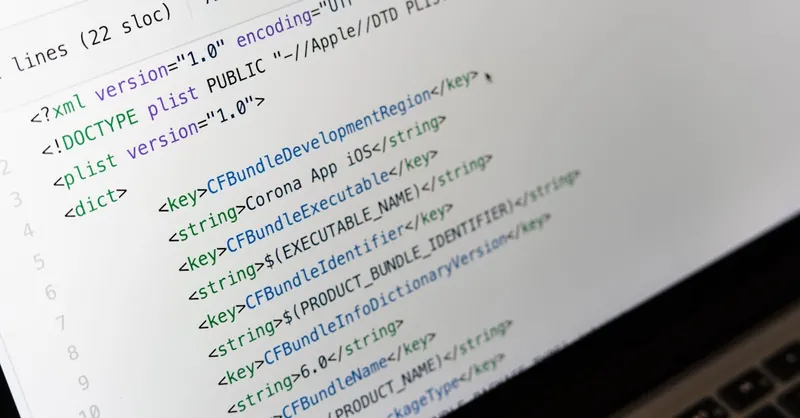How to Package Code Products for Profit: A Programmer’s Guide
Category: Programming
Unlock Profit Potential by Packaging Code Products the Right Way
You’re a tech-savvy programmer or developer with creative coding ideas that could generate passive income, but the challenge isn’t just in building great software — it’s in packaging it effectively to sell. Maybe you’ve built tools, libraries, scripts, or apps that others could benefit from, but you’re unsure how to turn those projects into profitable products. You’re here because you want a clear, actionable roadmap on how to organize, market, and monetize your code products without getting lost in complex business jargon or overwhelming technicalities.
This post cuts through the noise to address your specific pain points: structuring your code for easy use, choosing the right licensing and packaging formats, setting up distribution channels, and crafting offers that attract buyers. Unlike vague guides or generic advice, here you’ll find step-by-step strategies that align with your level of programming expertise and entrepreneurial goals — practical methods to get your creations into the hands of customers and generate steady income.
If you’ve been struggling to package your coding projects for profit or hesitant about where to start with software licensing and deployment, this guide is tailored for you. We’ll walk you through principles that turn your programming efforts into market-ready products designed to maximize returns and minimize ongoing work. Keep reading to transform your development skills into a lucrative passive income stream.
- Unlock Profit Potential by Packaging Code Products the Right Way
- Understanding Different Types of Code Products: Libraries, Plugins, Apps, and APIs
- Choosing the Right Packaging Format: ZIP Archives, Installers, Containers, and Package Managers
- Licensing and Intellectual Property Considerations
- Creating Clear Documentation and User Guides
- Setting Up Distribution Channels: Marketplaces, Direct Sales, and SaaS Platforms
- Marketing Your Code Product to the Right Audience
- Pricing Strategies for Maximizing Profit
- Automating Sales and Delivery to Create Passive Income
- Handling Customer Support and Feedback for Improvement
- Scaling Your Code Product Business: From Single Product to Multiple Income Streams
Understanding Different Types of Code Products: Libraries, Plugins, Apps, and APIs
When it comes to packaging your code for profit, recognizing the variety of code product types and their unique user needs is crucial. Each format serves different markets and solves distinct problems, influencing how you design, distribute, and price your product. Here’s a breakdown of the most common code products developers monetize successfully:
-
Libraries
Libraries are collections of reusable functions and modules that other developers integrate into their own projects. They're typically language-specific (e.g., JavaScript libraries like Lodash or Python libraries like Requests) and appeal to users who want to accelerate development by leveraging pre-built components. Packaging a library for profit means focusing on clean documentation, easy installation (via package managers like npm or PyPI), and ongoing maintenance to build trust with your developer audience. -
Plugins
Plugins extend the functionality of existing platforms or applications, such as WordPress plugins or browser extensions. They target users who want enhanced features without building from scratch. Plugins usually offer value by solving niche problems or adding customization options. For monetization, consider freemium models that provide a free basic version and premium paid upgrades or support. -
Apps
Standalone applications—whether desktop, mobile, or web—offer complete solutions to end-users. These are often packaged as downloadable software or SaaS (Software as a Service) products. Apps require an intuitive user interface and clear marketing to non-technical customers. Pricing strategies can range from one-time purchases to subscription plans, depending on the product's complexity and support requirements. -
APIs (Application Programming Interfaces)
APIs allow other developers or applications to access your software’s functionality over the web. Monetizing APIs involves delivering clear, reliable endpoints that solve specific needs, such as data processing or third-party integrations. Since APIs require ongoing uptime and support, typical revenue models are pay-as-you-go or subscription-based, often with tiered access levels.
By understanding the differentiated needs of your target users—developers, technical managers, or end-users—you can strategically package your code product with features, documentation, and pricing that resonate. This clarity positions you to meet market demand effectively and turn your programming skills into a sustainable passive income stream.

Image courtesy of Myburgh Roux
Choosing the Right Packaging Format: ZIP Archives, Installers, Containers, and Package Managers
Selecting the optimal packaging format is a critical step that directly impacts your code product’s accessibility, customer experience, and ultimately your profitability. The ideal packaging method depends heavily on your target platform, audience technical proficiency, and the nature of your product—whether it’s a library, plugin, app, or API client.
Here are the most popular packaging formats and when to use them:
-
ZIP Archives
ZIP files remain one of the most straightforward and universal packaging options, especially if your audience is comfortable with manual installation. This format is great for distributing scripts, simple tools, or multi-file projects without complex dependencies. However, ZIP archives typically require users to handle setup themselves, so offering clear installation instructions or setup scripts is essential for reducing friction. -
Installers (EXE, DMG, MSI)
For end-user applications or tools targeting less technical customers, native installers provide a seamless experience by automating the installation process. Windows EXE or MSI files and Mac DMG packages can include all necessary dependencies and configurations, lowering barriers to usage and boosting conversions. Consider using installers when ease of use and professional polish are priorities. -
Containers (Docker, OCI)
Containers are the go-to solution for delivering complex applications or development environments that require consistent behavior across different machines and platforms. Packaging your code as a Docker image can simplify deployment, especially for SaaS or server-side products. While more technical users appreciate containerized apps, clear documentation or companion scripts can ease adoption for beginners. -
Package Managers (npm, PyPI, Maven, etc.)
When distributing libraries or plugins primarily aimed at developers, package managers provide the most efficient and trusted method. Integrating your project with popular package repositories facilitates straightforward installation, versioning, and updates, enhancing your product’s credibility and discoverability. This format also supports automated dependency management—critical for maximizing user retention and satisfaction.
How to Decide Which Format Fits Your Product and Audience
- Assess your user’s technical level. If your buyers are mainly developers, lean towards package managers or containers. If targeting less tech-savvy customers, installers or ZIP archives with guided setup work better.
- Consider platform compatibility and complexity. Cross-platform projects benefit from containers or ZIP archives, while platform-specific apps should opt for native installers that align with operating system standards.
- Factor in maintenance and updates. Package managers and container registries enable smooth version control and automatic updates, which are crucial for building ongoing passive income without excessive support overhead.
- Balance ease of use with control. While installers and container images can simplify deployment, they might restrict customization your advanced users expect. ZIP archives offer flexibility but demand more effort from users.
By thoughtfully matching your packaging method to both your product’s technical demands and your customers’ expectations, you create an intuitive, professional user experience that encourages adoption and repeat purchases—key ingredients for turning your code into a sustainable passive income source.

Image courtesy of Tima Miroshnichenko
Licensing and Intellectual Property Considerations
When packaging your code products for profit, understanding licensing models and protecting your intellectual property (IP) are foundational to both securing your rights and enabling profitable use. Choosing the right license not only clarifies how others can use, modify, or distribute your code but also influences buyer confidence and revenue potential.
Popular Licensing Models Explained
-
MIT License
The MIT license is one of the most permissive and widely used licenses. It allows users to freely use, modify, and distribute your code — even within proprietary software — with minimal restrictions beyond attribution. This openness encourages broad adoption, making it ideal when your goal is rapid growth and community engagement, but it offers limited direct commercial control. -
GNU General Public License (GPL)
GPL is a copyleft license, meaning any derivative works must also be distributed under the same license terms. This ensures that your code and any adaptations remain open source. While GPL promotes collaborative improvement and sharing, it can deter commercial users who want to integrate your code into closed-source products without releasing their modifications. -
Commercial Licenses
Offering your code under a commercial or proprietary license lets you explicitly define terms for usage, distribution, and support—often requiring a fee or subscription for access. This approach maximizes revenue possibilities by restricting unauthorized use and allowing you to offer premium features, dedicated support, or enterprise-grade solutions. Commercial licensing also provides legal mechanisms to enforce your rights, essential for protecting your income stream.
Protecting Your Code While Enabling Profitability
Striking the right balance between protection and usability is key to monetizing your code effectively:
- Use dual licensing: Offer a permissive license like MIT for non-commercial or community users, while providing a commercial license for businesses that require additional rights or support.
- Include clear terms of service and usage agreements: Explicitly state what users can and cannot do with your product to avoid confusion and potential misuse.
- Protect your trademarks and branding: Even if your code is open source, your brand identity and logos can be trademarked to maintain control over your product's reputation.
- Apply obfuscation or licensing keys for executables: When distributing compiled apps or plugins, consider technical protections like license keys or code obfuscation to prevent unauthorized copying without compromising user experience.
By carefully selecting your licensing model and implementing intellectual property safeguards, you empower your users with confidence and legal clarity while maintaining control over your code's commercial use. This strategic approach not only maximizes your earning potential but also helps build a sustainable passive income from your programming projects.

Image courtesy of Markus Winkler
Creating Clear Documentation and User Guides
Delivering a profitable code product goes beyond writing excellent code — clear, comprehensive documentation is essential to reduce support requests and boost customer satisfaction. Well-crafted installation instructions, usage guides, and FAQs empower your users to get up and running quickly and troubleshoot independently, which directly lowers your support overhead while enhancing the perceived value of your product.
Best Practices for Writing Installation Instructions
- Make it simple and step-by-step. Break down the installation process into clear, numbered steps using straightforward language. Avoid assuming too much technical knowledge, especially if your target audience includes non-developers or beginners.
- Cover all target platforms and dependencies. Specify supported operating systems, required software (e.g., runtimes, libraries, package managers), and how to install dependencies. Include troubleshooting tips for common installation issues.
- Use code snippets and examples. Embed terminal commands, configuration snippets, or screenshots wherever possible to guide users visually and prevent confusion.
- Automate when possible. Provide installation scripts or automated installers in addition to manual instructions to simplify the process for less technical users.
Crafting Effective Usage Guides
- Start with a quick-start section that lets users achieve basic functionality immediately. This helps users see value fast, reducing dropout due to complexity.
- Include detailed explanations of features with practical examples and sample code, especially if you’re selling libraries, plugins, or APIs.
- Structure content logically with clear headings and a table of contents for easy navigation.
- Update regularly to reflect changes in your product and incorporate common user questions or issues you observe.
Building a Comprehensive FAQ Section
- Collect common questions from beta testers, early users, or through your own experience providing support.
- Address common errors, compatibility issues, licensing questions, and troubleshooting steps.
- Organize FAQs by topic to help users find answers quickly.
- Keep language direct and solutions actionable to empower users rather than overwhelm them.
High-quality documentation is a selling point—many buyers perceive detailed user guides and FAQs as a hallmark of professionalism and reliability. Investing time in crafting clear, user-focused documentation not only lowers customer frustration but significantly improves your product’s market reputation and retention rates. Ultimately, this reduces your active workload and helps scale your passive income gains sustainably.

Image courtesy of Markus Winkler
Setting Up Distribution Channels: Marketplaces, Direct Sales, and SaaS Platforms
Once your code product is ready, choosing the right distribution channels is vital to maximize exposure and profitability. Different sales platforms cater to various audiences and come with distinct fee structures and marketing advantages. Understanding how to leverage marketplaces, direct sales, and SaaS platforms helps you position your code product where your target customers are most likely to buy.
Popular Marketplaces for Selling Code Products
Marketplaces simplify the selling process by handling payment processing, hosting, and customer discovery, but they typically charge a commission or listing fee. Some of the most effective marketplaces include:
-
GitHub Marketplace
Great for developer tools, GitHub Marketplace offers exposure to millions of developers. It integrates seamlessly with existing workflows but charges a service fee on sales, typically around 10–12%. It’s ideal if your product targets professional developers already using GitHub. -
Envato Market (CodeCanyon)
Envato’s CodeCanyon is a leading marketplace for web scripts, plugins, and apps. It usually charges a tiered commission between 12.5% and 37.5%, depending on your exclusivity and earnings. This platform reaches a broad audience of freelancers, agencies, and businesses looking for ready-made solutions. -
ThemeForest and WordPress Plugin Repositories
If you sell WordPress plugins or themes, these dedicated marketplaces provide high-traffic exposure. Fees vary but generally range from 20% to 30%. These channels attract users seeking easy-to-install, specialized add-ons. -
NPM, PyPI, or Maven Central (for Libraries)
Repositories here are primarily for free distribution but can link to premium versions elsewhere or be used to offer paid support plans. Since package managers don’t process payments directly, you’ll often combine them with direct sales or subscriptions.
Direct Sales: Building Your Own Digital Storefront
Opting for direct sales via your own website gives you full control over pricing, branding, and customer relations, allowing you to maximize profits by avoiding marketplace commissions. However, this requires investing in payment processing, hosting, and marketing.
- Use platforms like Gumroad, Paddle, or Shopify to create seamless checkout experiences with minimal setup.
- Integrate license key management and automated delivery tools (e.g., FastSpring, WooCommerce) to streamline customer onboarding.
- Invest in SEO and content marketing to drive organic traffic and build a loyal audience, which lowers your dependency on third-party platforms.
- Maintain customer data to offer personalized upsells, support, and updates, enhancing long-term value.
SaaS Platforms: Recurring Revenue with Subscription Models
If your code product is a web application or API, hosting it as a SaaS (Software as a Service) solution opens opportunities for steady, recurring income. Popular SaaS marketplaces and platforms include:
- AWS Marketplace and Azure Marketplace for enterprise-level customers seeking cloud-based solutions.
- Stripe Billing or Chargebee to automate subscriptions and payments.
- Heroku Add-ons or Google Workspace Marketplace for niche application integrations.
While hosting costs and ongoing maintenance are higher, SaaS platforms facilitate scalable passive income through monthly or annual subscriptions. Pricing tiers and freemium models allow you to capture users at different maturity and budget levels, driving user acquisition and retention.
Comparing Fee Structures and Benefits
| Distribution Channel | Fee Structure | Best For | Key Advantage |
|---|---|---|---|
| Marketplaces (e.g. Envato, GitHub) | 10% - 37.5% commission | Developers, agencies | High traffic, easy discovery |
| Direct Sales (your website) | Platform fees (~3%-5%), no marketplace commission | All product types | Full control, higher margins |
| SaaS Platforms (AWS, Stripe) | Hosting and transaction fees, subscription billing costs | Web apps, APIs | Recurring revenue, scalability |
Selecting the right distribution channels hinges on your product type, target audience, and how much control versus convenience you want. For many developers, combining marketplaces for visibility with direct sales for higher margins strikes the optimal profit balance. Transitioning to a SaaS approach can unlock recurring revenue potential, turning your code products into reliable passive income streams over time.

Image courtesy of Markus Winkler
Marketing Your Code Product to the Right Audience
Successfully packaging your code product is only half the battle; the other half is reaching and convincing the right audience to buy it. To turn your programming effort into a profitable passive income stream, you need targeted marketing strategies that align your product’s features with your ideal users’ needs, build trust, and amplify visibility organically.
Identifying Your Target Audience
Start by clearly defining who will benefit most from your code product. Whether your product is a developer-focused library, a WordPress plugin, or a SaaS app, understanding your target users’ demographics, technical proficiency, pain points, and purchasing behavior is essential. Consider:
- User persona creation: Outline roles (e.g., freelance developer, startup CTO, hobbyist coder), their common challenges, goals, and preferred tools.
- Market research: Use forums, social media groups, GitHub discussions, and competitor analysis to discover what problems remain unaddressed or poorly solved.
- Engagement testing: Gather feedback through beta releases or surveys to refine your offering and clarify who benefits most.
This targeted approach ensures your marketing messages resonate deeply, driving higher interest and conversion rates.
Crafting a Compelling Value Proposition
Your value proposition is how you communicate the unique benefits of your product. A strong value proposition clearly answers why someone should buy your code product over free alternatives or competitors. Focus on:
- Problem-solving: Specify the exact problem your product addresses.
- Benefits over features: Highlight time savings, ease of use, reliability, or cost-efficiency rather than technical specs alone.
- Emotional triggers: Use language that reflects your audience’s frustrations or aspirations, such as “build faster,” “reduce errors,” or “scale effortlessly.”
Incorporate this value proposition prominently on your landing pages, documentation, and marketing materials to engage potential buyers immediately.
Leveraging Content Marketing for Organic Growth
Content marketing is a highly effective, low-cost strategy to attract your ideal users by providing valuable information that subtly promotes your product. Key tactics include:
- Educational blog posts: Write tutorials, how-tos, and best practices that demonstrate your expertise and naturally integrate your code product as a solution.
- Video demonstrations: Showcase installation guides, feature walkthroughs, or real-world use cases to build trust through visual proof.
- Guest posts and collaborations: Partner with influencers or complementary projects to reach wider audiences and leverage existing communities.
- Email newsletters: Nurture leads by sending regular updates, tips, and exclusive offers tailored to user interests.
This approach not only improves your site’s SEO ranking by targeting relevant keywords and increasing backlinks but also builds authority and a loyal audience over time.
Building Trust with Social Proof
Potential customers are much more likely to purchase when they see evidence of quality and satisfaction from others. Integrate social proof elements such as:
- User testimonials and case studies describing specific benefits and results.
- Star ratings and reviews if your product is listed on marketplaces or your own site.
- Download or usage statistics showcasing widespread adoption.
- Community endorsements via social media mentions, GitHub stars, or influencer shoutouts.
Displaying authentic social proof reduces buying hesitation and positions your code product as a credible, tested solution in your niche.
Optimizing for Search Engines (SEO)
SEO ensures your code product is discoverable by developers and buyers actively searching for related solutions. Focus on:
- Keyword research: Identify high-intent keywords and phrases your target audience uses, including “best [language] library for [problem],” “how to automate [task],” or “premium WordPress plugins for [use case].”
- On-page SEO: Embed targeted keywords in page titles, headers, URLs, meta descriptions, and naturally within your content without keyword stuffing.
- Technical SEO: Ensure fast load speeds, mobile-friendly design, clean site architecture, and SSL security.
- Link building: Acquire backlinks from relevant programming blogs, forums, and directories to boost domain authority.
Consistently optimizing your website and content improves its search engine rankings, drives qualified organic traffic, and increases sales without ongoing paid advertising costs.
By mastering these audience targeting, value messaging, and SEO-driven content marketing strategies, you can maximize your code product’s visibility, credibility, and profitability—turning your programming projects into reliable passive income sources.

Image courtesy of Lisa from Pexels
Pricing Strategies for Maximizing Profit
Choosing the right pricing model is crucial to unlocking the full profit potential of your code products. Pricing influences not only buyer behavior but also shapes your product’s perceived value and the type of customers you attract. Different code products and customer segments respond better to certain pricing strategies, so understanding your options will help you maximize revenue while building a loyal user base.
One-Time Purchase Pricing
A one-time purchase or perpetual license charges customers a single fee to own the product indefinitely. This model suits standalone apps, plugins, or libraries that don’t require frequent updates or ongoing support. It simplifies decision-making for buyers because they pay once and receive lifetime access. To optimize one-time pricing:
- Set a clear value justification by highlighting unique features and time savings.
- Offer discounts for early adopters or bulk purchases.
- Bundle related tools or add-ons to increase average order value.
While this model generates upfront revenue, it might limit recurring cash flow, so complement it with other monetization methods for sustained profits.
Subscription-Based Pricing
Subscriptions charge customers a recurring fee—monthly, quarterly, or annually—granting access to your software and updates. This strategy fits SaaS products, APIs, and tools that require continuous maintenance or cloud hosting. Benefits include predictable revenue streams and closer customer relationships. Key tips:
- Provide multiple subscription tiers to address varying user needs and budgets.
- Offer free trials or discounted introductory periods to reduce signup friction.
- Emphasize continuous updates, premium support, and exclusive features to justify ongoing payments.
Subscriptions also encourage user retention, which compounds profitability over time through lower churn rates.
Freemium Models
The freemium model combines free basic access with paid premium upgrades. It’s ideal for developer tools and plugins where widespread adoption is essential. Offering a useful free tier helps:
- Grow your user base quickly and build trust.
- Collect valuable feedback to improve the product.
- Upsell premium features like advanced functionality, performance enhancements, or priority support.
Success with freemium hinges on clearly differentiating free and paid versions and ensuring the paid tier delivers enough added value to convert free users consistently.
Tiered Pricing for Customer Segments
Tiered pricing creates structured packages that vary in features, capacity, or usage limits to appeal to different customer segments—from beginners to enterprise clients. This flexible approach can:
- Capture a broader audience by offering a low barrier entry point.
- Encourage upgrades as users’ needs grow.
- Maximize revenue by charging more for advanced features or higher usage.
Consider factors like API call limits, user seats, or access to premium integrations when designing your tiers. Clearly communicate the benefits of each level to reduce buyer confusion.
By carefully selecting and combining these pricing strategies, you can tailor your monetization approach to your code product’s unique value proposition and your customers’ willingness to pay. Experimenting with pricing and gathering user feedback will help you optimize profitability and create a scalable passive income stream from your programming projects.

Image courtesy of Pixabay
Automating Sales and Delivery to Create Passive Income
To truly unlock passive income from your code products, automating critical parts of the sales and delivery process is essential. Manual handling of downloads, license key generation, updates, and customer communication not only consumes valuable time but also creates bottlenecks that hinder scalability. Automation streamlines your workflow, reduces support overhead, and ensures a smooth, professional experience that buyers appreciate and trust.
Automate Digital Downloads and Licensing
Set up an automated system that handles secure product downloads immediately after payment. Using platforms like Gumroad, Paddle, or FastSpring allows you to:
- Instantly deliver the correct version of your software or code package.
- Generate and distribute unique license keys that control access and protect your intellectual property.
- Track sales and licenses in real time, enabling you to monitor customer activity and manage renewals or upgrades.
Automated license key generation also prevents unauthorized usage, maintains your revenue integrity, and reduces refund requests—key to sustaining passive profit.
Streamline Updates and Version Control
Automated update mechanisms keep your customers on the latest version effortlessly. Consider:
- Push notifications or in-app update prompts for standalone apps.
- Using package manager versioning for libraries and plugins to trigger seamless upgrades.
- Maintaining changelogs and update feeds that notify users of new features or critical patches.
Effective update automation increases user satisfaction, reduces compatibility issues, and enhances your product’s reputation—leading to higher retention and recurring revenue.
Enhance Customer Communication with Automation
Automated email sequences and support bots can handle:
- Purchase confirmations and onboarding instructions immediately after sale.
- License renewals, upsell offers, and feedback requests to nurture customer relationships.
- Common support inquiries through AI-powered chatbots or well-curated FAQ systems.
This ongoing communication builds trust, encourages repeat purchases, and allows you to scale your income without trading time for money.
By integrating these automation strategies into your sales and delivery processes, you create a frictionless customer journey that enhances satisfaction while minimizing manual intervention—delivering a true passive income stream from your creative programming products.

Image courtesy of Catalina Carvajal Arango
Handling Customer Support and Feedback for Improvement
Providing excellent customer support and proactively using feedback loops are essential practices for turning your code product into a profitable and sustainable passive income stream. Even the best-packaged software can encounter user questions, bugs, or feature requests — how you handle these interactions not only impacts customer satisfaction but directly influences your product’s reputation and long-term success.
Best Practices for Setting Up Support Channels
-
Offer Multiple Accessible Support Options:
Ensure your customers can reach out easily through channels such as email, dedicated support tickets, community forums, or chatbots. This flexibility caters to different user preferences and reduces frustration. For developer-focused products, consider integrating GitHub Issues or Discord communities where users can receive community-driven help. -
Create a Knowledge Base and FAQ:
A comprehensive, searchable knowledge base filled with troubleshooting articles, common questions, and detailed guides dramatically lowers your support workload. Well-maintained documentation empowers users to self-serve solutions quickly, improving their experience and freeing you for higher-impact tasks. -
Set Clear Response Expectations:
Communicate your expected response times upfront so users know when to anticipate support. Fast, consistent replies build trust and reduce negative reviews that can deter potential buyers. -
Use Support Automation Tools:
Implementing automated ticket routing, canned responses, or AI chatbots for common queries improves efficiency and ensures your team or you personally can focus on more complex issues.
Leveraging Feedback Loops to Enhance Your Code Product
Continuous improvement driven by user feedback is a powerful way to boost customer satisfaction and profitability. Consider the following strategies:
- Collect Feedback Proactively: Use in-app surveys, follow-up emails, or feedback forms to encourage customers to share their experiences and suggestions.
- Analyze Support Tickets and Reviews: Identify recurring issues or feature requests that reveal opportunities to enhance your product’s usability and capabilities.
- Engage with Your Community: Actively participate in forums, social media, or developer communities related to your product to gather informal feedback and gauge market needs.
- Prioritize Iterative Updates: Use the insights gained to roll out regular updates that address pain points, introduce requested features, and refine performance, signaling your commitment to quality.
By establishing robust support channels and embracing a continuous feedback-driven improvement cycle, you elevate your product’s value proposition, foster loyal customers, and enhance word-of-mouth referrals. These factors are critical to sustaining high sales volume and creating a profitable passive income source from your programming projects.

Image courtesy of Yan Krukau
Scaling Your Code Product Business: From Single Product to Multiple Income Streams
Once you’ve successfully packaged and launched your initial code product, the next step towards building sustainable passive income is scaling your business by expanding your offerings. Diversifying your product lineup not only attracts a broader audience but also mitigates risk by creating multiple revenue streams that complement and reinforce each other. Here are some effective strategies to grow your code product business beyond a single release:
1. Expand Your Product Portfolio Strategically
Instead of focusing solely on one type of product, develop related tools, plugins, or add-ons that serve your existing customers’ evolving needs. For example, if you started with a JavaScript library, consider creating plugins that extend its functionality or companion applications that leverage your core technology. This encourages cross-selling opportunities, increases customer lifetime value, and establishes your brand as a comprehensive solution provider.
2. Bundle Complementary Products for Better Value
Offering product bundles or packages can entice users to purchase more by providing a perceived discount or additional utility. Bundling multiple libraries, plugins, or services together creates a more compelling offer and simplifies the buying decision. You can tailor bundles for different user segments—beginners might prefer a basic pack, while advanced users opt for a premium set with extra features and priority support.
3. Collaborate with Other Creators and Businesses
Partnerships and collaborations exponentially expand your reach and credibility. Team up with other developers who create complementary or adjacent code products to co-develop bundles or joint marketing campaigns. Collaborations can also include reseller agreements, affiliate programs, or joint webinars and workshops, enabling you to tap into new audiences and diversify income with limited upfront costs.
4. Introduce Different Pricing Models Across Offerings
Mix pricing strategies across your portfolio to maximize revenue streams. For instance, combine one-time purchases for utility libraries with subscription-based SaaS offerings or freemium plugins. This hybrid approach captures different market segments and adapts to changing customer preferences, increasing long-term business resilience.
5. Leverage Automation and Marketing Across Multiple Products
Scaling isn’t just about creating more products—it’s about efficiently managing your growing catalog with automated sales funnels, licensing, and customer support systems. Use segmented email marketing and personalized upsell campaigns to nurture leads across your entire product ecosystem, driving consistent passive income without significantly increasing your workload.
By thoughtfully expanding your code product lineup, bundling value-added offers, and fostering collaborative growth avenues, you can transform a single project into a robust, multi-stream passive income business. These strategies not only increase revenue potential but also deepen customer relationships and market presence—key ingredients for long-term profitability in the software product space.

Image courtesy of Lukas
